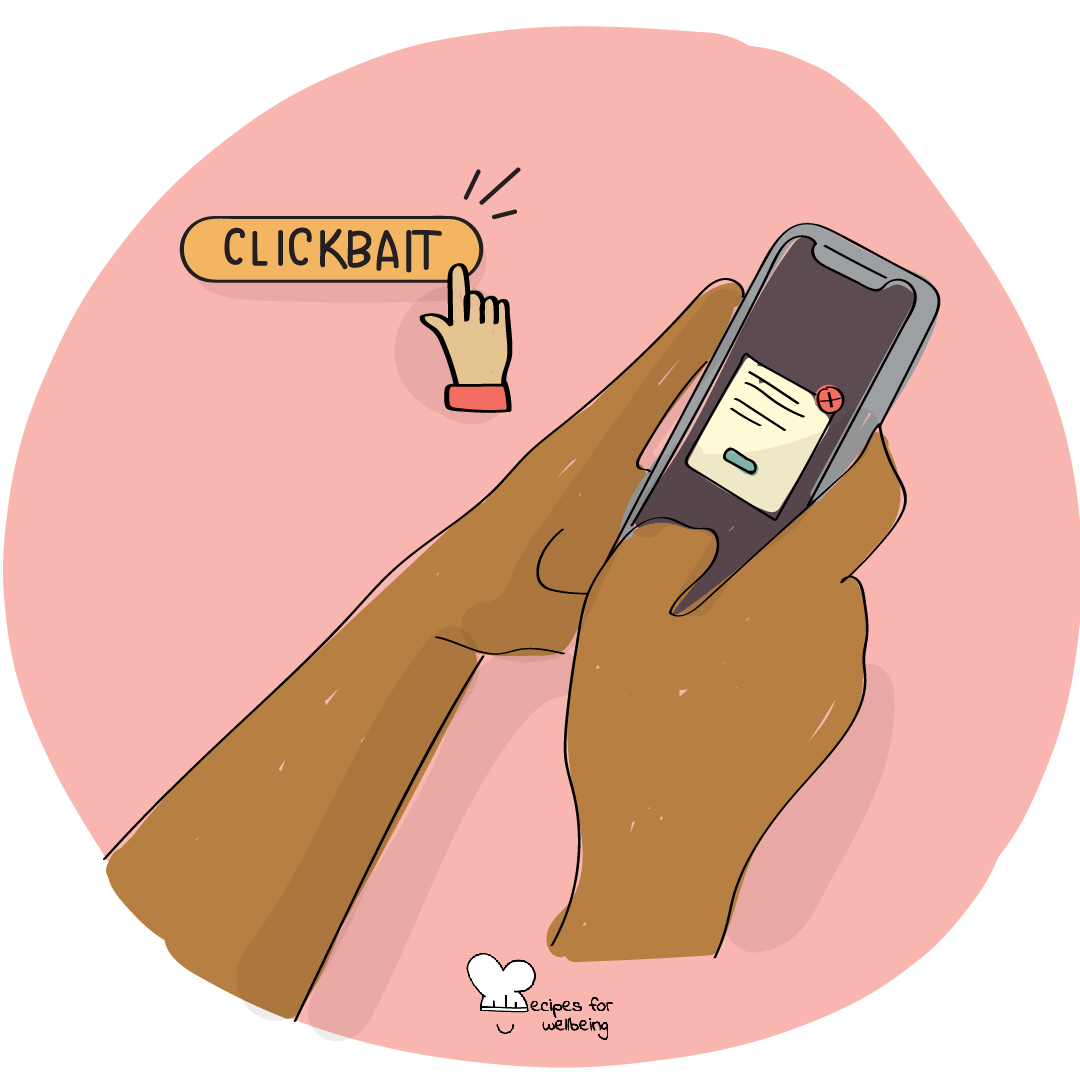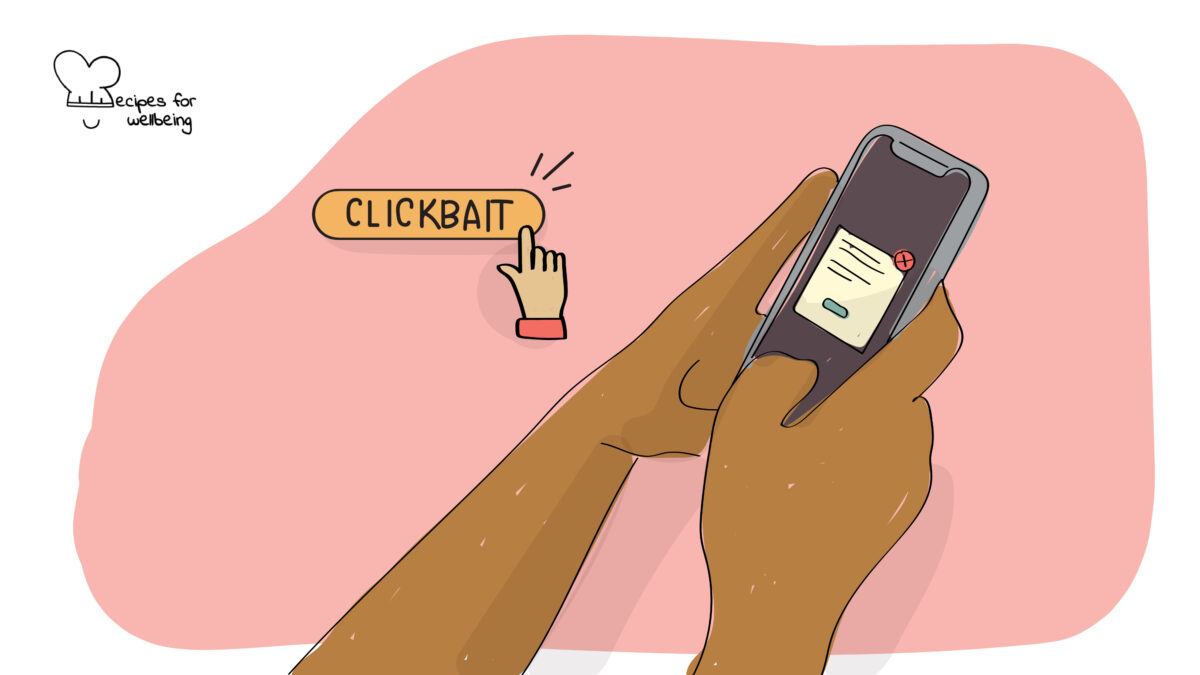
The dangers of clickbait and how to avoid it
The digital revolution has brought us incredible opportunities, but also new challenges. It is our responsibility to navigate this complex landscape with integrity, ensuring that technology serves the best interests of humanity. ―Tim Berners-Lee
👥 Serves: 1 person
🎚 Difficulty: Medium
⏳ Total time: Ongoing
🥣 Ingredients: Digital responsibility
💪 Nutritional values: Digital Literacy, Online Etiquette and Respect, Privacy and Security

The dangers of clickbait and how to avoid it
📝 Description
Safeguarding against clickbait: Understanding its perils and ways to dodge them.
At some point or another, we’ve all fallen prey to a tantalising headline, only to find upon opening the article that we’ve been misled, or at worst, swindled. The fact is, this happens because clickbait is very good at doing exactly what it has set out to do – which is to lure us in, under the guise of credible content.
The experience of being deceived by clickbait, along with the time wasted on irrelevant or sensationalised content, can trigger heightened stress levels, anxiety, and a pervasive feeling of being overwhelmed, which can have negative effects on our general wellbeing.
So, how do you tell the difference between clickbait and content that you can trust? This recipe explains the possible dangers of clickbait and offers guidance on how to avoid it. It has been kindly donated by Eliza Williams, a consultant and researcher for digital content & media.
👣 Steps
Step 1 – What is clickbait, and why should I be wary?
Clickbait can be generally defined as content that exists to attract people to a particular page or site, but that doesn’t necessarily hold any informational value, or is misleading.
Logic tells you that this isn’t much to worry about, as we assume that we can just click off of the site without retaining the unwanted information – no harm, no foul. But the reality is, this is easier said than done. After all, if it’s good clickbait, how are we to know that the information’s not legitimate?
This is where the danger lies, as we buy into and potentially spread false information. At best, we share a questionable gossip story – at worst, harmful propaganda, that has the potential to alter lives.
Step 2 – Pay attention to the wording
So, how can you avoid falling for clickbait? The best place to start is with the language that first captures your attention.
Such content will often use sensationalist headlines, made up of words that are intriguing and persuasive. Opening phrases may sound something like “You won’t believe…” or, “THIS is the result of…”. They sound very exciting, but usually contain little information as to what the content will actually be about, and if they do, it’s often a claim that’s simply so ridiculous, that we feel we just have to click. Remember that freebies are rare.
For the most part, the only people who genuinely want to give to us without receiving anything in return are our friends and family – perhaps a kind stranger, but definitely not a profitable business.
The best way to weed out the potential threats from the good deals is to consider motive. Ask yourself, “Why would this company want to give me a free holiday in return for clicking the link in their bio?” and you may find that, come to think of it, such a freebie would put any legitimate company out of business.
Step 3 – Be mindful of social media
When we think of clickbait, we tend to think of magazine headlines and those all-too-familiar junk email scams. Social media is a newer threat, and one we may therefore be less aware of. But, just like other media, social media platforms are notorious for clickbait – and it can even be hidden in the wholesome profiles of some of our most beloved influencers.
This is something to keep in mind when buying into a particular trend, or purchasing an endorsed product. After all, we want to use social spaces for good – to connect, and inspire – whilst still being mindful that their misuse can be harmful.
Step 4 – Seek out alternative sources
When reading a piece of information, try to find other sources that corroborate it to ensure that it is content that can be trusted. Always make sure that your second source is one that you already know to be reputable for a sure-fire way to confirm that the information is reliable.
Unfortunately, it’s becoming more difficult to avoid clickbait altogether, so it’s good to think about how you will respond to such content if you do happen to come across it. Consider ways that you can verify the source of the content – and if you can’t, think about how you can process and then let go of the information that you have been exposed to, in a way that is healthy and safe for yourself and those around you.
If you’d like to expand your awareness beyond digital content, we invite you to check out our recipe “Healthy skepticism”.

